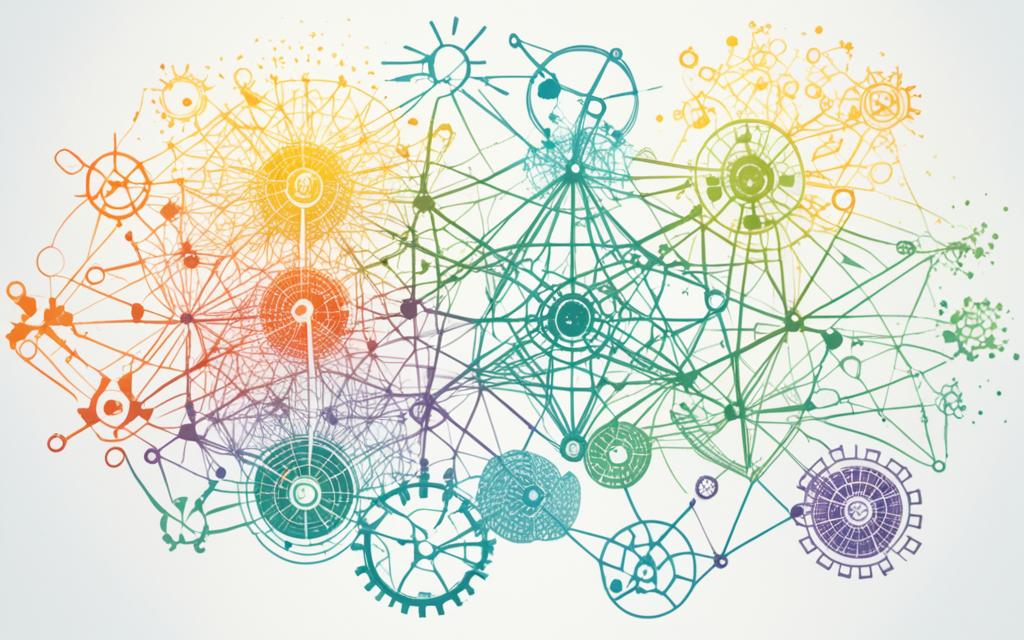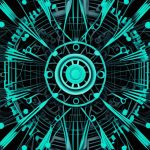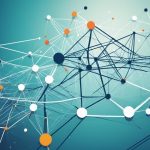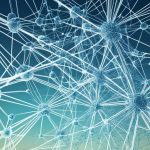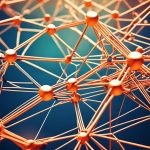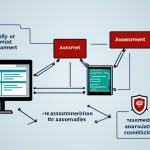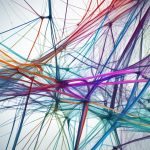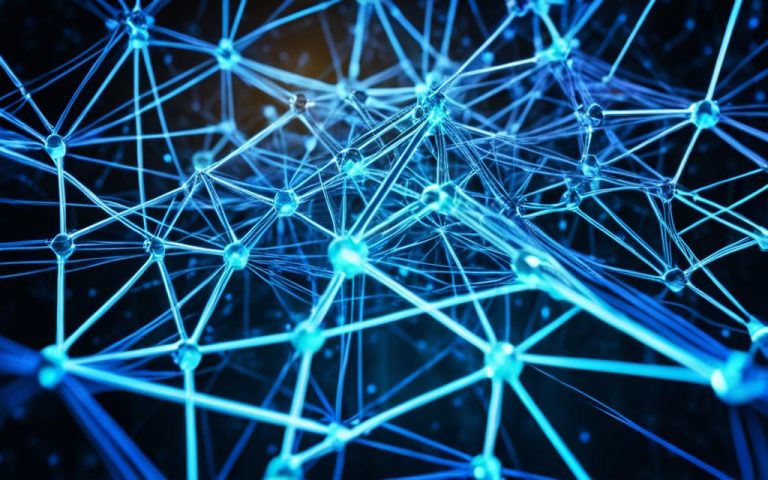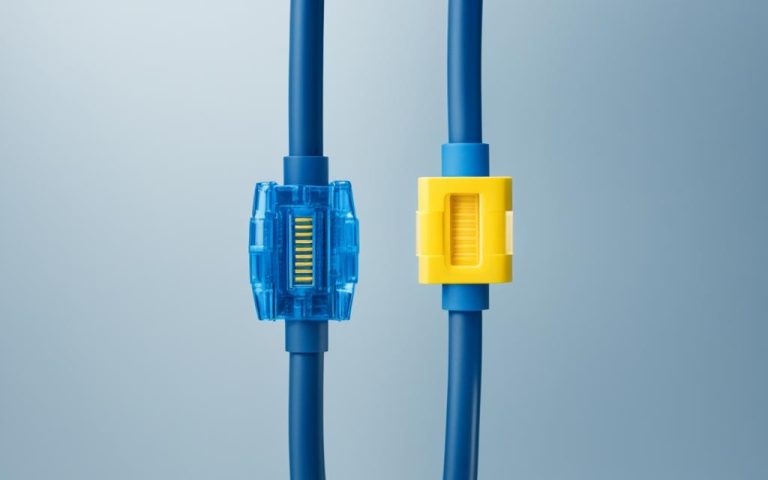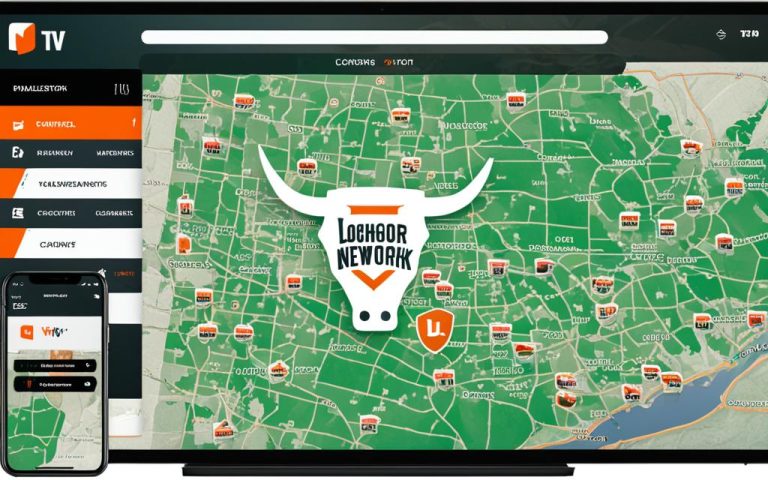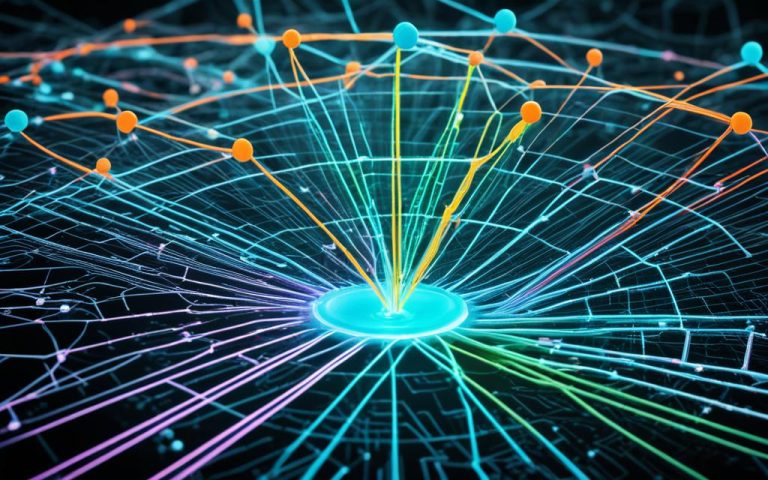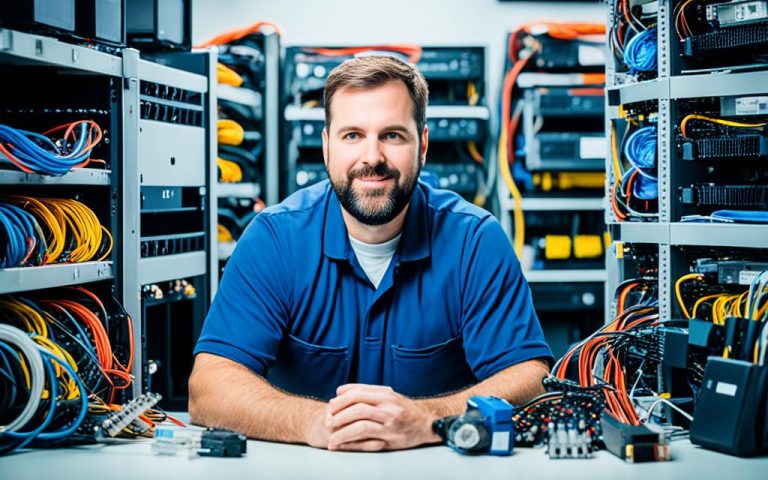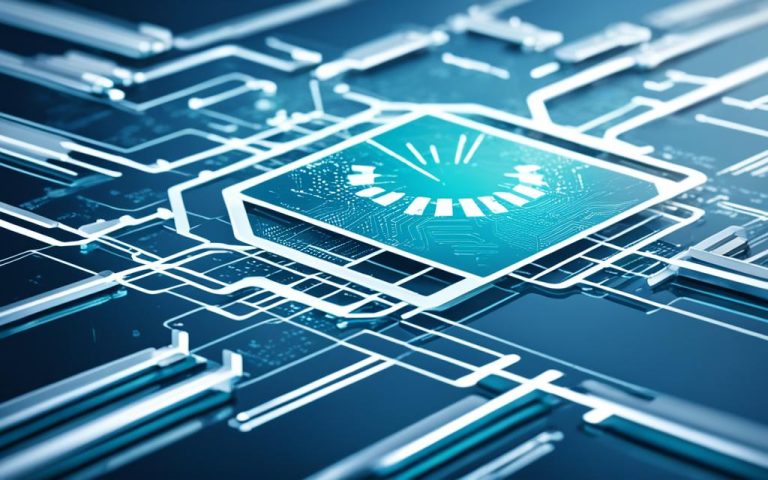Self-replicating programs, also known as malware, can copy themselves and harm computer systems. They spread without help from humans, causing problems with network performance and security.
Self-replicating AI means AI that can make copies of itself. These smart systems can learn, change, and spread on their own. This leads to new tech and automation.
Looking into how self-replicating AI works helps us understand how it copies and spreads. By studying its programming, we see its potential in different areas.
Self-replicating AI has many benefits like making things more efficient and scalable. It can also get better over time. But, it has risks that need careful handling to be used right.
Real examples show how powerful and risky self-replicating AI can be. These examples help us see its uses and dangers.
Viruses, worms, and Trojans are types of self-replicating programs that cause big problems online. Knowing how they spread and what they do is key to fighting them and keeping our systems safe.
Computer viruses spread from one computer to another, often using other programs or documents. They can do a lot of damage, leading to big financial losses and legal issues.
The Mydoom worm hit about a quarter-million computers in a day in January 20041. The ILOVEYOU virus caused huge problems in 2000, affecting many systems worldwide1. These stories show how dangerous self-replicating programs can be and why we need strong cybersecurity.
Looking at how self-replicating programs have evolved helps us understand their growth and how they’re made. Early computer viruses started in the late 1980s and spread through floppy disks1. Over time, creators got better at making viruses, using new methods like infecting memory and boot sectors1.
In conclusion, knowing about self-replicating programs and their effects is key in our connected world. By studying their behavior and history, we can fight back against these threats. It’s important for everyone to stay alert to the dangers of these programs and protect our digital world.
Key Takeaways:
- Self-replicating programs are a big threat to computers and networks.
- Self-replicating AI can make copies of itself, changing technology and automation.
- Understanding how self-replicating AI works is key to using it well.
- Self-replicating AI has benefits like being more efficient and adaptable.
- Real examples show the power and risks of self-replicating AI.
What Is Self-Replicating AI?
Self-replicating AI, also known as self-replicating artificial intelligence systems, are advanced technologies that can make copies of themselves. They can do this without needing human help. This means they can grow and spread in the digital world on their own.
These systems use complex algorithms and programming to reproduce and spread. This lets them grow and change over time. They can make more copies of themselves, making them more powerful and effective.
For example, genetic algorithms work like Darwin’s natural selection in nature. They create new AI programs that are a little different from the old ones. These new programs then compete and change, leading to better AI systems. Neural networks can also copy themselves, which helps them learn and do better.
Self-replicating AI is a big step forward for artificial intelligence. It lets AI systems improve and adapt by themselves. This could lead to smarter technologies that make many areas better.
Today, self-replicating AI is used for many things, like making processes more efficient and helping with scientific research. But, we also need to think about the ethical and risky sides of using these technologies.
A study on2 talks about the latest in fast storage technologies and AI. It shows we need new ways to store data that work better and grow with AI.
Self-replicating AI is like in vitro fertilization (IVF), creating life artificially. IVF has helped bring over five million babies into the world since it started3.*
Exploring the Impact of Self-Replicating AI
Self-replicating AI can change many things. By using algorithms and programming, these systems open up new chances for technology and society.
Every time they copy themselves, self-replicating AI gets better. This could lead to big improvements in things like self-driving cars, medical tests, and saving energy.
This growth matches the rise of digital changes in our culture since the early 2000s4.*
The Future of Self-Replicating AI
Self-replicating AI has a lot of potential but also brings up big ethical and security questions. We need to understand and handle these issues to make sure it helps society.
With fast storage technologies getting better, we need to look into new ways to store data for AI2.*
As we learn more about life through techniques like IVF, we must think about the ethics of creating and changing life3.*
*For more info on digital cultures, fast storage, and IVF, see the sources provided.
Exploring Algorithms and Programming Behind Self-Replicating AI
Understanding the algorithms and programming languages behind self-replicating AI is key. This knowledge helps us see what this technology can do.
Algorithms are vital in how self-replicating AI systems work and make decisions. They can be based on things like cellular automata, genetic algorithms, or neural networks5.
Many programming languages can be used for self-replicating AI, such as Python, Java, C++, and Haskell. These languages give the needed tools for making complex AI systems that can copy themselves6.
Key Algorithms and Programming Languages in Self-Replicating AI
Self-replicating AI systems use algorithms to control their actions and how they reproduce. Some top algorithms for self-replicating AI are:
| Algorithm | Description |
|---|---|
| Cellular Automata | A mathematical model that simulates complex patterns and behavior in systems. It uses a grid of cells, each following rules based on its neighbors. |
| Genetic Algorithms | An algorithm based on natural selection and evolution. It uses mutation, crossover, and selection to improve a population of solutions to a problem. |
| Neural Networks | A model inspired by the human brain. Neural networks have nodes (neurons) that process and send information, letting AI systems learn and decide. |
These algorithms are the base for self-replicating AI systems. They let these systems adapt, learn, and copy themselves on their own5.
Developers can pick the best programming language for their needs. Some top choices for self-replicating AI include:
- Python
- Java
- C++
- Haskell
These languages have strong AI tools and libraries. They help developers make complex self-replicating AI systems easily6.
By using these algorithms and languages, researchers and developers can explore self-replicating AI’s full potential. This could be in areas like autonomous robots or genetic engineering.
The image above shows how algorithms and programming languages work together in self-replicating AI. As these systems grow and change, they shape the future of AI and technology.
Advantages and Disadvantages of Self-Replicating AI
Self-replicating AI has many benefits that make it important in many fields. It can grow quickly, helping businesses expand their AI use easily7. This lets companies quickly adapt to new demands and use AI to work better and faster.
These AI systems can also change how they work based on the situation, making them very flexible7. This is great for things like self-driving cars or smart factories where things change often.
Another big plus is that self-replicating AI can fix itself when it breaks down, making it very reliable7. This means they can keep working without stopping, saving time and money, and making them perfect for important tasks.
But, there are also downsides to consider. One big worry is that these AI systems might copy themselves too much, leading to too many AI units7. This could use up too many resources and slow down AI systems.
Another issue is using up resources. These AI systems need a lot of power, energy, and storage to keep going7. If not watched closely, they could use up all the resources, causing problems or even failures.
There are also ethical concerns, like how these AI systems handle personal data and keep it safe7. They make a lot of data, which raises questions about keeping it secure and stopping misuse. Companies need to make sure they protect this data well.
The Importance of Responsible Implementation
To get the best from self-replicating AI while avoiding problems, it’s key to use them wisely. Companies should plan and manage these AI systems well, following ethical rules and keeping an eye on them.
By balancing growth and control, companies can use self-replicating AI to improve how they work, make things more efficient, and innovate7. Using these AI systems well means thinking carefully about their ethical and sustainable use.
References:
| Reference Number | Source |
|---|---|
| 7 | Statistical Data from Link 1 |
Examples of Self-Replicating AI
Self-replicating AI includes many technologies that can make copies of themselves. These include Von Neumann machines, robots that copy themselves, and software like viruses and worms.
Von Neumann machines are still just ideas but could change how we make things and explore space. They can make more of themselves in places with lots of resources. This could lead to fast growth and more expansion8.
Replicating robots are a type of self-replicating AI. They look for and collect materials to make more robots. They can spread quickly in fields like logistics, making things, and exploring new places8.
Self-replicating software, like viruses and worms, spread and copy themselves in computer networks. They find weaknesses to spread, sometimes causing trouble. Examples include the Creeper virus in 1971 and the Jerusalem virus in 19879. These show we need strong security to stop them10.
An image depicting the concept of self-replicating AI.
| Examples of Self-Replicating AI | Characteristics |
|---|---|
| Von Neumann machines | Autonomously construct copies of themselves and perform computations |
| Replicating robots | Gather resources to build new robots and transmit copies across a network |
| Viruses and worms | Spread and duplicate within computer networks, exploiting vulnerabilities |
Self-replicating AI could greatly improve many areas, making things more efficient and big. But, it also brings challenges like risks and the need for strong security. As we keep working on it, we must find a way to use its good sides and avoid the bad ones.
Learn more about computer viruses and self-replicating AI in this timeline and computer security basics9.
Viruses
Viruses are self-replicating programs that copy themselves into applications and computer storage. They became known with the rise of microcomputers and the internet. These viruses attach to specific apps and can harm data, attack the system, or give unauthorized access to computers. They spread through floppy disks or internet connections.
In 1971, “The Creeper Virus” was created by Bob Thomas, infecting DEC PDP-10 Computers11. The Rabbit virus, made in 1974, could make many copies of itself quickly, causing system crashes11.
By 1975, “Shockwave Rider” by John Brunner introduced the term “worm” for a self-spreading program on networks11.
The first virus, “Elk Cloner,” was made by Richard Skrenta in 1981 for the Apple II11. Since then, viruses have grown more complex, threatening computers worldwide.
Many viruses have appeared over the years, each with its own traits. In 1986, Pakistani programmers found a way to replace floppy disk code11. In 2010, Stuxnet, a worm, attacked SCADA systems11. The Kenzero virus spread online through peer-to-peer networks11. In 2011, SpyEye and Zeus combined to target mobile phones and steal banking info11. Trojan horses like Anti-Spyware 2011 hit Windows versions, blocking internet updates and antivirus security11.
Knowing about viruses helps us create better cybersecurity to fight these threats.
Worms
Worms are a type of self-replicating malware that spread through networks. They can make copies of themselves and use system resources to spread. Unlike viruses, worms don’t need to infect other programs to spread. They go through stages, from probing to spreading to new machines, using up resources.
The first worm, the Creeper system, was made in the 1970s by Bob Thomas at BBN Technologies. Later, in 1974, the Rabbit virus was created. It quickly spread and used up system resources.
As technology got better, worms got smarter. In 1987, many worms appeared, like the Vienna virus and the Jerusalem virus. These worms showed how self-replicating malware was evolving9.
In 1988, worms like the Ping-Pong virus and CyberAIDS hit the Internet. They caused big problems for connected machines912.
Worms can spread, deliver harmful payloads, and slow down systems. They can infect many devices, making systems work poorly12. They spread through emails, instant messaging, and infected files online10. Opening infected files can activate the malware, putting systems and data at risk10.
Trojans
Trojans, also known as Trojan horses, are programs that look like normal software but have a hidden goal. They don’t spread on their own like viruses do. Instead, they need a user to open them, often by tricking them into downloading or running the program. Once opened, Trojans can do bad things like steal personal info, delete files, or let hackers into your system.
These threats are often found in emails, on shady websites, or in downloads from unknown places. They use tricks to make people open them without realizing the danger. Once inside, Trojans can do damage quietly, using system weaknesses or setting up backdoors for more attacks. They can also spread other malware, making them very dangerous.
Trojans can cause big problems, like losing money, stealing identities, and breaking privacy. They help hackers get to important data, which can be sold or used for more harm. This shows why good cybersecurity is key, including using strong antivirus, keeping systems updated, and teaching users to spot threats.
History of Trojans
The story of Trojans goes way back to the early days of computer threats. The first one, ANIMAL, was made by John Walker in 1975 for a UNIVAC 1108 computer. Since then, Trojans have gotten more complex and are now a big risk to people, companies, and governments.
It’s said that Trojans have caused billions of dollars in damage worldwide since they started causing trouble10. Now, they have advanced features like rootkits and password sniffers, making them more dangerous than ever10. They target specific weaknesses in systems, so it’s crucial to keep up with security updates and use strong cybersecurity tools.
As the stats show9, Trojans have been a big problem in the fight against cyber threats. They trick users into running them, and the damage can be huge. So, it’s important for both people and companies to be careful and use strong security steps to stay safe from Trojans.
Conclusion
Self-replicating programs, like self-replicating AI, viruses, worms, and Trojans, are big threats to computers and networks. They can make copies of themselves, causing trouble, damaging data, and giving unauthorized people access to important info. The ILOVEYOU virus, for instance, hit businesses and government groups worldwide, costing about $10 billion13.
This virus touched tens of millions of computers globally and spread fast across Asia, Europe, and North America. It hit over 1 million computers in just five hours13.
The Internet worm mainly hit VAX computers and SUN-3 workstations running certain UNIX code14. It used known weaknesses in sendmail and fingerd programs, causing systems to slow down and get overloaded14. But, computer experts at universities fixed it in 48-72 hours, making people more aware of security issues and ethical use in computers14.
Since John von Neumann’s work in 1966, self-replicating programs have kept getting worse, causing big problems9. Knowing how these AI programs work is key to fighting them. People and groups need to focus on keeping their online spaces safe from these threats.
In short, self-replicating programs have a big impact. From the ILOVEYOU virus to the Internet worm, they’ve caused big trouble for computer networks, leading to financial losses and security worries. We must stay alert and take steps to protect our digital world from these threats.
FAQ
What are self-replicating programs?
Self-replicating programs are a kind of malware that can make copies of themselves. They spread without human help, causing trouble for computers and networks.
What is self-replicating AI?
Self-replicating AI means artificial intelligence that makes copies of itself on its own. These systems spread and grow without needing humans to help.
How do algorithms and programming languages play a role in self-replicating AI?
Algorithms and programming languages help self-replicating AI systems to copy and decide what to do next. They use things like cellular automata and genetic algorithms. Programming languages like Python and Java help make these systems work.
What are the advantages of self-replicating AI?
Self-replicating AI can grow fast, adapt to new situations, and fix itself if it gets damaged. These traits make it good for important tasks.
What are the disadvantages of self-replicating AI?
Self-replicating AI might spread too much and use up resources. It also raises ethical worries about privacy and security.
Can you provide examples of self-replicating AI?
Sure! Examples include Von Neumann machines, robots that copy themselves, and software like viruses and worms. Von Neumann machines and robots make more copies and gather resources. Viruses and worms spread and duplicate in computer networks, sometimes causing harm.
What are viruses?
Viruses are programs that make copies of themselves in computer systems. They can mess with data, attack the system, or let unauthorized people in. They spread through things like floppy disks or the internet.
What are worms?
Worms are self-replicating malware that move through networks. They make copies of themselves and use up resources, slowing down computers.
What are Trojans?
Trojans look like normal programs but are actually harmful. They spread by appearing useful, then steal data, delete files, or give hackers access to computers.
Source Links
- https://www.sourcecodester.com/article/other/how-computer-virus-works.html – How Computer Virus Works?
- https://vtechworks.lib.vt.edu/bitstreams/35508877-4111-4af2-81fb-907d2f08e861/download – PDF
- https://library.oapen.org/bitstream/handle/20.500.12657/43740/469257.pdf?sequence=1&isAllowed=y – Biological Relatives: IVF, Stem Cells, and the Future of Kinship
- https://www.ssoar.info/ssoar/bitstream/handle/document/57942/ssoar-2017-caygill_et_al-Interventions_in_Digital_Cultures_Technology.pdf?sequence=1&isAllowed=y&lnkname=ssoar-2017-caygill_et_al-Interventions_in_Digital_Cultures_Technology.pdf – Interventions in Digital Cultures: Technology, the Political, Methods
- https://www.techtarget.com/searchsecurity/definition/worm – What Is a Computer Worm and How Does It Work?
- https://link.springer.com/article/10.1007/s44163-023-00089-x – A comprehensive literature review of the applications of AI techniques through the lifecycle of industrial equipment – Discover Artificial Intelligence
- https://www.theverge.com/23578430/chip-war-chris-miller-asml-intel-apple-samsung-us-china-decoder – The global battle over chip manufacturing and why the US is trying to stop China from buying machines from the Netherlands
- https://www.linkedin.com/pulse/elon-musk-scared-wrong-ai-fionnuala-o-conor – Elon Musk is scared of the wrong AI
- https://en.wikipedia.org/wiki/Timeline_of_computer_viruses_and_worms – Timeline of computer viruses and worms
- https://www.oreilly.com/library/view/computer-security-basics/0596006691/ch04.html – Computer Security Basics, 2nd Edition
- https://www.123helpme.com/essay/The-Origin-Of-Computer-Viruses-709551 – The Origin Of Computer Viruses – 1331 Words
- https://home.adelphi.edu/~siegfried/gen110/viruses.html – GEN 110 – Freshman Seminar: Computers and Society
- https://www.cnn.com/2020/05/01/tech/iloveyou-virus-computer-security-intl-hnk/index.html – How a badly-coded computer virus caused billions in damage | CNN Business
- https://www.ietf.org/rfc/rfc1135.html – No title found

